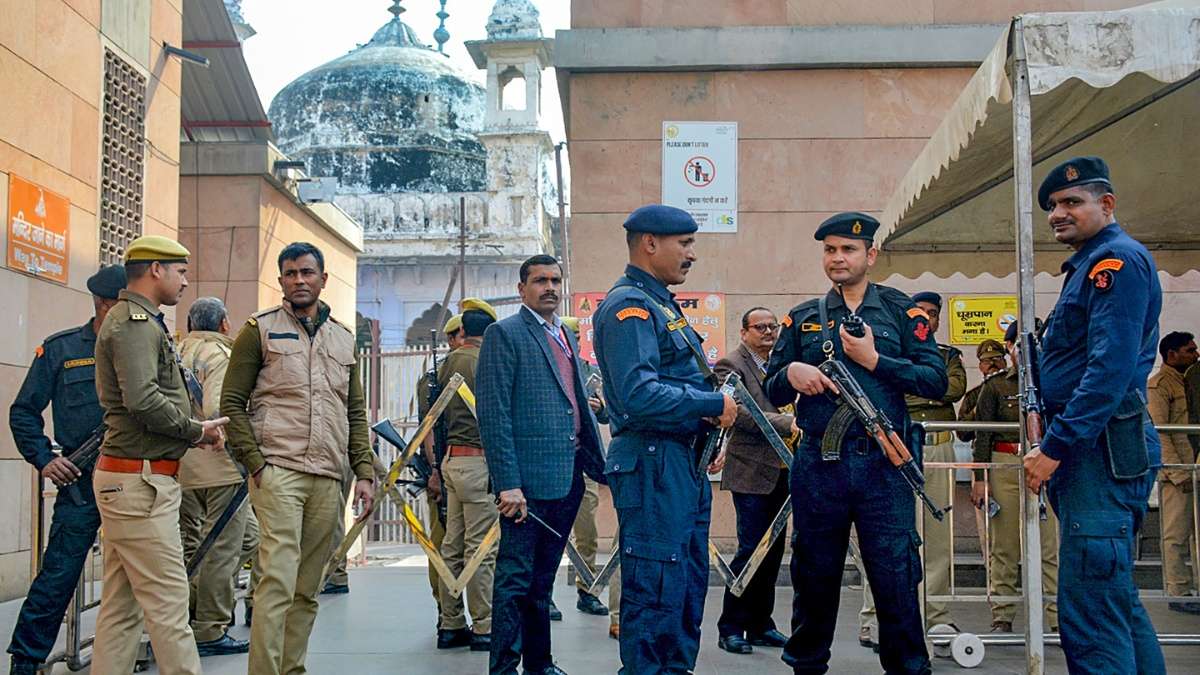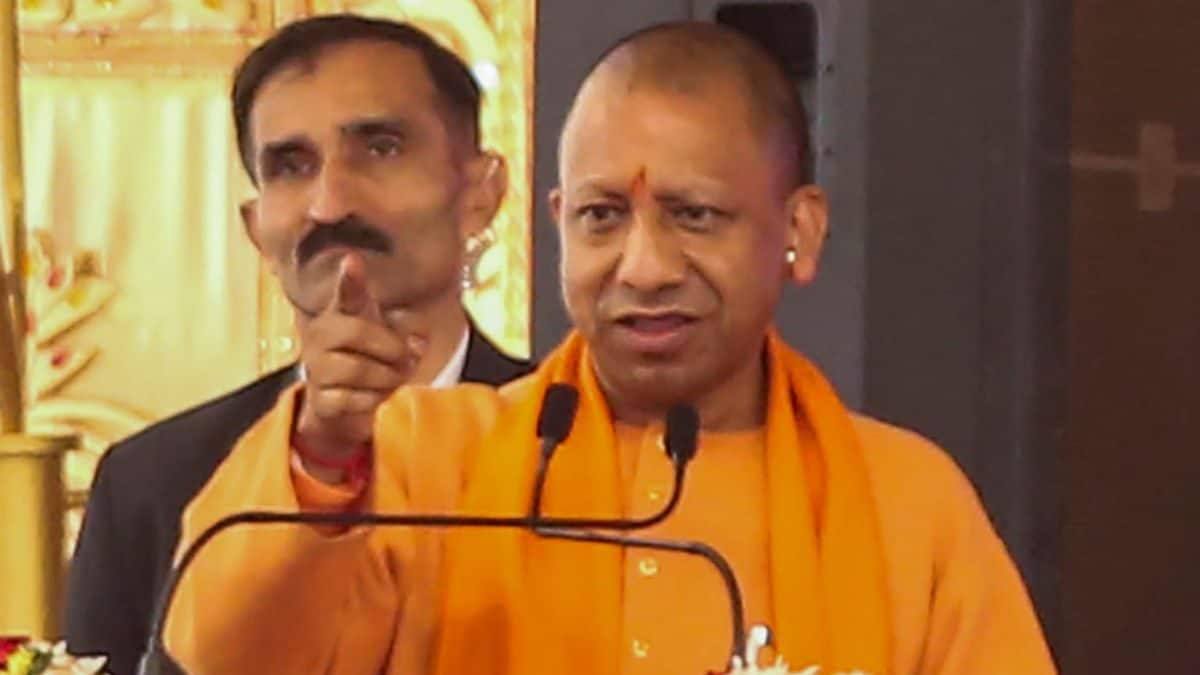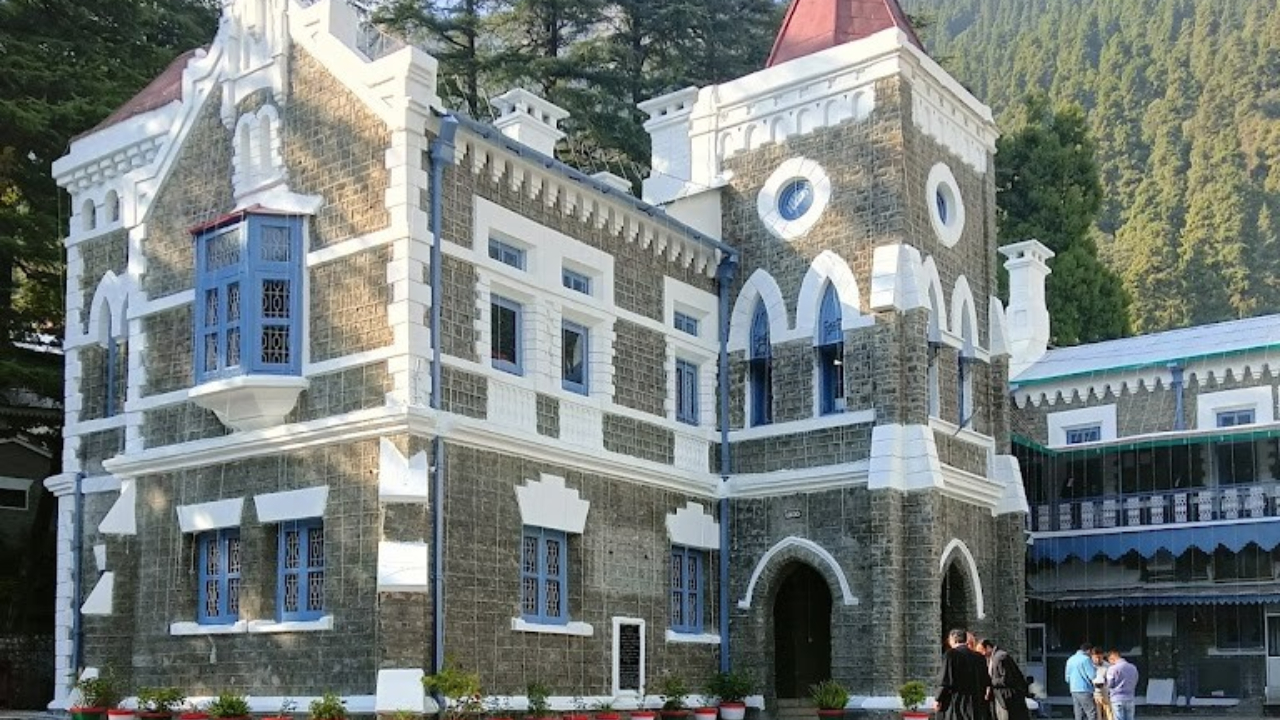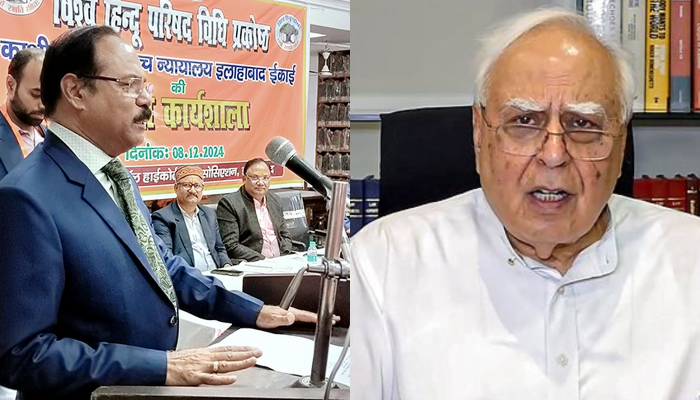
Gyanvapi: Fading Minorityism in India and Zealots’ Last Stand - News18
News 18Turning on the news these days usually entails listening to shrieking voices over the Gyanvapi Mandir in Kashi. As per Altekar’s 1937 book History of Benares: From the Earliest Times Down to 1937, which was written when he was the dean of Banaras Hindu University’s Department of Ancient Indian History and Culture, the Gyanvapi Mosque is said to have been mounted in 1669 under the reign of Aurangzeb, who ordered the razing of the ancient Vishweshwar temple and the erection of a mosque in its place. On May 14, 1937, Professor Paramatma Sharan, a Banaras-born historian, made a declaration on behalf of the British government wherein he cited portions from Maasir-I-‘Alamgiri, written by the historian during Aurangzeb’s period, which claimed that Gyanvapi Mosque was a temple in the 16th century. Instead of facing the sanctum sanctorum of the temple, an antique sculpture of the Nandi within the enclosure of the current Kashi Vishwanath temple faces the mosque’s wall. Many Hindus have long believed that during Aurangzeb’s invasion, the original lingam of the ancient Vishweshwar temple was hidden by priests in the Gyanvapi well, which has sparked a desire to perform puja and rites at the pious site where the mosque now sits.
History of this topic

Prima Facie Disturbed Harmony In Society: Delhi HC Refuses To Quash FIR Against DU Professor Over Post Relating To Gyanvapi Mosque
Live Law
Muslim religious leaders say Yogi’s Gyanvapi comment is irresponsible; Congress says it amounts to contempt of judiciary
The Hindu
UP CM Yogi Adityanath says unfortunate that Gyanvapi is identified as a mosque; says it is Vishwanath
Op India
Islamophobia and India’s election: Rising Hindu nationalism leaves Muslims fearful in India’s holy city
CNN
Supreme Court allows Hindu worship to continue at Gyanvapi premises
India TV News
SC to hear on Apr 1 Gyanvapi committee's plea against allowing puja in cellar
New Indian Express
It's not a controversy, it’s a contemporary issue: Author Vikram Sampath on Kashi’s Gyanvapi
New Indian Express
SC to hear Gyanvapi mosque committee’s plea against Allahabad HC order
Live Mint
Gyanvapi case: Allahabad HC dismisses plea challenging Hindu prayers in cellar
Live Mint
Gyanvapi case : Allahabad High Court dismisses plea, Puja to continue in Gyanvapi’s cellar
The Hindu
Gyanvapi Mosque Case: Hindus Can Continue Prayers in Cellar, Allahabad HC Dismisses Muslim Side Plea
News 18
Gyanvapi case: Allahabad High Court rejects Muslim side's pleas, Hindu prayers to continue in cellar
India TV News
TMC leader warns CM Yogi Adityanath over Hindu worship at Gyanvapi
Live Mint
The Gyanvapi case and a sense of disquiet in Varanasi
The Hindu
Keeping up with UP | The Mandir-Masjid issue is not over
Hindustan Times
Gyanvapi dispute: Varanasi court to hear Hindu call for survey, Muslim protest against Puja in cellar today
India TV News
In Modi’s constituency Varanasi, India’s next temple-mosque spat explodes
Al Jazeera
OPINION | GYANVAPI: AVOID POINTING FINGERS AT JUDICIARY
India TV News
‘Disappointed’: Muslim body criticises prayers held at Gyanvapi cellar
Hindustan TimesMuslim leaders denounce Gyanvapi ruling, claim ‘faith in judiciary wearing thin’
The Hindu
Gyanvapi case: AIMPLB to move SC against Allahabad HC ruling, says 'Islam doesn't allow demolition of temples'
India TV News
OPINION | GYANVAPI: BOTH HINDUS, MUSLIMS MUST EXERCISE UTMOST RESTRAINT
India TV News
Hindu priest offers prayers at cellar of Gyanvapi mosque in Varanasi
The Hindu
VHP reacts to Varanasi court's Gyanvapi order; Uma Bharti suggests 'final solution'
Hindustan Times
Varanasi court permits Hindu worship inside sealed basement of Gyanvapi mosque; masjid committee to appeal
The Hindu
Hindu side files new Supreme Court plea on Gyanvapi mosque in Varanasi
Hindustan Times
‘ASI Ki Report Kya Batati hai’: CM Adityanath’s 1st Remark On Gyanvapi Mosque Case ASI Report
News 18
Citing ASI report, VHP asks Muslim side to hand over Gyanvapi structure to Hindus
Hindustan Times
Gyanvapi mosque case raises a challenge to the Places of Worship Act
The Hindu
VHP demands Gyanvapi mosque be handed over to Hindu community, citing ASI survey
New Indian Express
Letters to The Editor — January 27, 2024
The Hindu
Muslim side says ASI’s report on Gyanvapi not final verdict: ‘Responsibility to keep mosque safe’
Hindustan Times
BJP's Giriraj Singh appeals to Muslim side: 'Hand over Gyanvapi mosque to Hindus'
Hindustan Times
Gyanvapi mosque panel reacts to ASI's 'pre-existing temple' finding, says 'not final word'
Hindustan Times
Gyanvapi case: Grand Hindu temple existed before mosque, Hindu side lawyer quotes ASI survey
India TV News
Gyanvapi mosque case: HC judge recuses from hearing plea against Varanasi court's order on 'wazukhana' survey
New Indian Express
‘1991 Act not violated’: Allahabad HC on Gyanvapi mosque pleas
Hindustan Times
Allahabad HC says Gyanvapi title suit not barred by Places of Worship Act, rejects plea of Muslim side
The Hindu
Gyanvapi case: Allahabad HC allows suits seeking restoration of temple
Deccan Chronicle
ASI’s Gyanvapi report filed in a sealed cover
Hindustan Times
Gyanvapi mosque report submitted in UP court by Archaeological Survey of India
Live Mint
Allahabad HC to take up pleas on Kashi Vishwanath-Gyanvapi dispute today
Live Mint
Court-mandated ASI survey raises fears of Gyanvapi mosque going the Babri way
The Hindu)
Gyanvapi mosque controversy: Hindu outfit calls for out-of-court settlement
Firstpost
Gyanvapi case: fresh application seeks curbs on entry to mosque to protect Hindu symbols
The Hindu
Gyanvyapi mosque survey: court asks petitioners and respondents to refrain from speaking to media
The Hindu
Incremental injustice: The Hindu Editorial on the Gyanvapi mosque survey
The Hindu
Gyanvapi mosque: Allahabad HC likely to pronounce verdict on survey by ASI today
Live Mint
Gyanvapi gets a political edge
Hindustan Times
'Muslim side should accept its historical mistake and propose a solution': Yogi Adityanath on Gyanvapi
India TV NewsDiscover Related




























)








)




)





